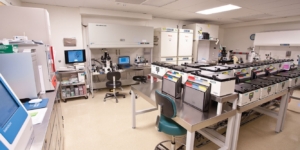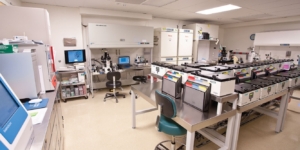
Unexpected Origin of Embryo Development Challenges Discovered in Lab Glassware
An international research group has identified an unforeseen factor affecting in vitro embryo development: commonplace laboratory glassware. As outlined in a pioneering study published on April 2 in the journal Biology of Reproduction, glass instruments utilized during embryo culture can leach zinc into their surroundings—significantly impacting embryonic growth and developmental outcomes.
Led by Professor Kazuo Yamagata from Kindai University in Japan, the research demonstrates how even minimal amounts of zinc released from glass pipettes, filters, or glass-bottom culture dishes can disrupt essential cellular functions in early-stage embryos. Such disruptions include irregularities in chromosome segregation and improper gene activation, which are crucial for normal development.
Zinc: An Undetected Embryotoxic Menace
In routine in vitro fertilization (IVF) experiments, researchers noted an unanticipated drop in embryo viability under stable lab conditions. Through detailed experimentation, the team identified the cause as zinc leaching from the glassware typically used throughout the culture process.
Testing showed that zinc levels as low as 6 micromolar—amounts frequently leached from common laboratory glass tools—could negatively affect early embryonic growth in mice. Mouse embryos exposed to this zinc exhibited abnormalities in mitotic cell division within the first 48 hours after fertilization. Those embryos that successfully reached full-term birth showed unusually high birth weights, averaging 18 percent heavier than standard controls.
The results suggest that even seemingly innocuous environmental factors can have significant biological impacts, particularly during the critical stages of early embryonic development.
Multispecies Documentation of Zinc’s Impact
The toxicity effects were not restricted to murine models. Human and bovine embryos also showed negative responses to zinc exposure, though sensitivity varied between species. Human embryos experienced a higher rate of “direct cleavage,” an abnormal cell division where a single embryo cell divides into three or more daughter cells at once. This division pattern is associated with reduced developmental potential and lower implantation success rates.
The biological implications of these early-stage disruptions are extensive. Improper cell division and genomic distribution can lead to developmental halts, deformities, or altered birth characteristics, compromising the effectiveness of fertility treatments in both clinical and research environments.
Reassessing Laboratory Procedures
The study’s implications extend beyond just the laboratory setting. More than 2.4 million assisted reproductive technology (ART) procedures are conducted worldwide each year. Over 9 million individuals have been born via IVF since its groundwork in 1978. In spite of technological progress and refined clinical protocols, variability in embryo development remains a challenge, often without obvious explanations.
“This study emphasizes not just the importance of managing risks in embryo culture but also aids in the formulation of safe and effective assisted reproduction techniques,” the authors noted.
To reduce zinc-induced embryotoxicity, researchers successfully implemented preventive strategies, including:
– Chelating Agents: Incorporating compounds such as EDTA (ethylenediaminetetraacetic acid) into culture media during the zinc-sensitive embryonic phase. These agents help bind excess metals, preventing embryos from taking in harmful concentrations.
– Pre-Cleaning Glassware: Thoroughly cleaning glass equipment prior to usage resulted in decreased zinc leaching and improved embryo development results.
Looking Forward: Enhancing IVF Consistency
This revelation serves as a crucial reminder for scientists, embryologists, and clinicians in the field of assisted reproduction. By carefully examining the materials and microenvironments integrated within laboratory conditions, practitioners have the potential to greatly enhance the predictability and success rates of IVF procedures. These findings could also extend benefits to veterinary medicine, livestock breeding, and fundamental biological studies in embryonic development.
For hopeful parents pursuing IVF, this research opens new pathways of optimism. With enhanced laboratory practices, more embryos may develop as intended, thus boosting the chances of healthy pregnancies and live births.
The study serves as a reminder that scientific advancement frequently hinges on small details. An object as commonplace and seemingly neutral as glassware can exert a significant effect on biological results. Therefore, maintaining vigilance in experimental design and laboratory protocols remains essential for achieving reliable reproductive technologies.
For more information, the complete study, “Zinc from laboratory glassware impairs early development of mammalian embryos,” can be found in Biology of Reproduction. Access the article at: https://academic.oup.com/biolreprod/advance-article/doi/10.1093/biolre/ioaf050/8102274
Support Independent Science Journalism
If this reporting has informed, inspired, or empowered you, please consider supporting science journalism. Every contribution, regardless of size, helps ensure that we continue to uncover the scientific developments that matter most. Your support enables dedicated journalists to deliver accurate, in-depth, and impactful stories from the laboratory to the world.
Fuel knowledge. Support truth. Make a difference today.
